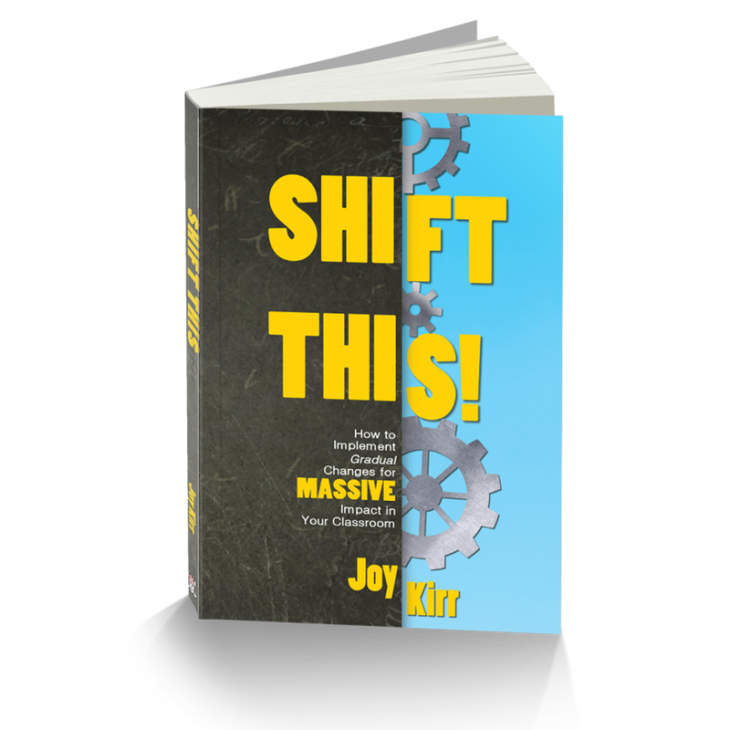We all know co-workers that are set in their ways. Maybe they’re five years away from retirement and have decided that they aren’t going to make extra work for themselves on the way out. Maybe they’re convinced that what they’re doing is best for kids because “kids have it too easy these days.” Maybe they just have a fixed mindset.
Heck, maybe they’re us.
Some time in the last few years, educators were divided into camps. Nothing official, nothing tribal, but it’s clear that there are educators out there seeking their own professional development and others who clearly could not care less about improving teaching. I can understand some of the reasons, but I can’t understand their sentiment. We all got into this business to help kids learn, and some of the old methods really don’t reach today’s kids. We are told the kids have changed, but many teachers are unwilling to meet them. If a student has to pick between looking at me and looking at their smartphone, then you can darn well be sure I am going to be working my butt off to be more engaging than that smartphone.
In Shift This, Joy Kirr isn’t necessarily looking for an immediate paradigm shift. She isn’t begging teachers to drop everything they’ve ever done and switch to a new model of teaching. Shift This is about finding the areas of teaching that aren’t working for you and making small changes. Call them shifts. No one says we have to change overnight, but we can certainly shift overnight.
In the book, Kirr makes a good case for a student-centered classroom. Each change that she suggests in the way a classroom could be run is about doing something that is best for our kids, even if it may not be the most convenient thing for the teacher. Some may think that Kirr’s ultimate shifts, the goal points at the widest end of the shift graph, are far too “pie in the sky” for their classrooms, and that’s okay. Kirr isn’t asking teachers to jump to pie in the sky. She’s asking for them to make a shift.
This book is FULL of ideas. If I had to make a suggestion to teachers, I’d recommend focusing on the chapters that represent areas that you feel need shaking up in your teaching. If grading or homework aren’t working for you the way they exist in your classroom right now, then those are places you can make some shifts with Kirr’s ideas! If you’re ready to make a movement toward student empowerment, then Kirr’s segment on Genius Hour is for you. Even small things that shape a classroom environment like flexible seating or the atmosphere you create with music are shifts that can be made using the principles behind Shift This.
This isn’t an advertisement. This is me imploring the teachers that I know who are on the fence about making changes to look at some of the small changes you can pick from this book that will pay dividends for student engagement and empowerment in the long run. I’m working on my feedback system in my math classes now based on the ideas presented in the grading section myself. I’ve read the book, and it’s time to hone in on the shifts that I want to make this year!
I truly think that if some of the educators who are on the fence about making changes can hop off it due to the ideas in this book, then maybe we can move away from the old-school vs. fiery go-getters mentality that can do nothing but hurt education if it stays the same.
Finally, I’d like to add that while some education professionals can come across as distant or even unrealistic due to their time away from the classroom, Joy Kirr is still in a 7th grade ELA classroom putting in the same work that you and I do every day. And I have to say, if it’s working for her right this very moment, then it could work for you or me the same way.


Hunter, I love that you understand the point of SHIFT THIS. I was writing it as one long blog post, and when I realized there was a point to it is when I decided to maybe try to get it published… 😉 After reading readers’ ideas of the book and their direct messages to me about how they’re the “crazy” teacher and they feel as if they’re all alone, I’ve realized some things. One thing you mention early in this post is the two “tribes” of teachers. Teachers who seek out professional development and “others who clearly could not care less about improving teaching.” I believe this must be untrue for many people who are not seeking out PD as we are. Teaching is my passion, and it must be one of yours, as well. Some teachers have passions elsewhere, so that’s where their “development” focus is. Some are raising families, some have ailing parents, and other genuine priorities get in the way during our busy teacher lives. I’ve learned through teachers’ messages – on BOTH sides of this divide – that we both have a difficult time taking each others’ perspectives, and we have to believe that we’re all on the same side to helping children learn. So keep on keeping on – keep sharing (gotta LOVE that you have a blog!!) through your writing, through your discourse with teachers, and with parents and students. My ultimate dream is that parents begin advocating for these shifts with teachers after their children leave me. In the mean time, you and I can keep asking questions that provoke thought and reflection. Keep going back to your reasons “why” to see who you can get to cross that fence.
LikeLike
Amen!! This is THE book everyone should be reading right now!!
LikeLike